Digitalisation is the ongoing integration of digital technologies and digitised data across the economy and society. The definitions below aim to familiarise the user with key concepts and terminologies applied in this digitalisation online resource.
3D printing/additive manufacturing

'a group of processes to build physical objects directly from 3D Computer-Aided Design (CAD) data. AM adds liquid, sheet, wire or other powdered materials to form component parts or products, usually in a layer-by-layer process (e.g. 3D-Printing) as opposed to subtractive manufacturing methodologies.'
The key prerequisite of 3D printing and AM is that products can be digitally modelled before being physically generated.
Reference documents:
- Publication: Automation, digitisation and platforms: Implications for work and employment
- European Commission: A blueprint for sectoral cooperation on skills (Wave II): Additive manufacturing
Examples of application/use:
- Used increasingly in a wide range of settings, including in prototyping and visual design in the automotive sector and many other sectors and the manufacture of orthodontics and prosthetic devices, aircraft parts, construction materials and jewellery, among other things.
Advanced robotics

The term applies to digitally enabled robots working within industrial environments that are equipped with advanced functionality, for example sensors that detect potential collisions and halt or perform a programmed motion very quickly. This advanced functionality allows robots to deal with less structured applications and, in many cases, collaborate with humans (instead of being segregated from them).
The term ‘service robot’ is understood as any robotics application used for anything except manufacturing. The International Organization for Standardization (ISO) definition is
'a robot that performs useful tasks for humans or equipment excluding industrial automation applications’.
Examples of application/use:
- Eve, the robot scientist, developed at the University of Manchester can speed up drug discovery by rapidly analysing different compounds for their suitability.
- Ultraviolet (UV) disinfection robots can be used in settings with high infection risks, such as hospitals, to carry out cleaning tasks using UV light technology.
- Kaspar, the humanoid social robot, has been developed to support social interaction with autistic children.
- Robotnik mobile service robots can carry out complex lifting and moving tasks with high levels of awareness of their environment, which helps, for example, to prevent collisions.
Artificial intelligence (AI)
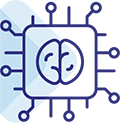
The EU High-level Expert Group on Artificial Intelligence defines AI as follows:
'Artificial intelligence (AI) systems are software (and possibly also hardware) systems designed by humans that, given a complex goal, act in the physical or digital dimension by perceiving their environment through data acquisition, interpreting the collected structured or unstructured data, reasoning on the knowledge, or processing the information derived from this data and deciding the best action(s) to take to achieve the given goal. AI systems can either use symbolic rules or learn a numeric model, and they can also adapt their behaviour by analysing how the environment is affected by their previous actions.
As a scientific discipline, AI includes several approaches and techniques, such as machine learning (of which deep learning and reinforcement learning are specific examples), machine reasoning (which includes planning, scheduling, knowledge representation and reasoning, search, and optimization), and robotics (which includes control, perception, sensors and actuators, as well as the integration of all other techniques into cyber-physical systems).'
Reference documents:
- Publication: Game-changing technologies: Transforming production and employment in Europe
- European Commission: Artificial intelligence for Europe
- European Commission: A definition of AI: Main capabilities and scientific disciplines, High-Level Expert Group on Artificial Intelligence
Examples of application/use:
- Used in a wide range of settings including the screening medical images, quality control and translation services.
Autonomous vehicle
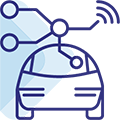
Examples of application/use:
- Maasvlakte 2, a fully automated port infrastructure at the port of Rotterdam, uses autonomous vehicles (see the case study in the Eurofound working paper Autonomous transport devices: Implications of game-changing technologies in the services sector in Europe; includes other use cases of driverless vehicles).
Blockchain
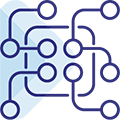
In a distributed ledger, information about a transaction is recorded onto the system permanently, and the information is simultaneously held by all the ‘participants’ (nodes) in the system, without the need for a central authority to certify that the transaction took place. This technology is the foundation of cryptocurrencies such as Bitcoin.
Examples of application/use:
- Linq, blockchain-based private securities transactions between private customers developed by Nasdaq
- Nasdaq eVoting, a blockchain-based e-voting solution
- Hosting of academic certificates in the University of Nicosia, Cyprus (for details on this and the previous examples, see the Eurofound working paper Blockchain: Implications of game-changing technologies in the services sector in Europe)
- Provenance supply-chain tracking and examples from EU Blockchain Observatory and Forum
Digitalisation
Digitisation
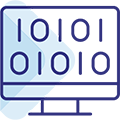
Electric vehicle

ICT-based mobile work
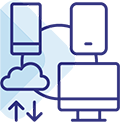
Industrial biotechnology

Internet of things (IoT)
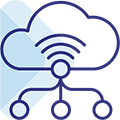
Reference documents:
- Publication: Automation, digitisation and platforms: Implications for work and employment
- Publication: Game-changing technologies: Transforming production and employment in Europe
Examples of application/use:
- In industrial manufacturing and agricultural processing, to monitor production processes
- In utilities, for example, to monitor water quality
- In logistics, to manage operations and the flow of products
For more examples, see the report Digitisation in the workplace.
Platform
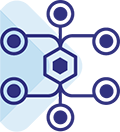
Platform economy

Platform work
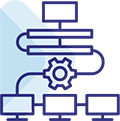
Virtual reality (VR) and augmented reality (AR)

Reference documents:
- Publication: Automation, digitisation and platforms: Implications for work and employment
- Publication: Game-changing technologies: Transforming production and employment in Europe
Examples of application/use:
- AR glasses used in DHL supply-chain logistics to support order-picking instructions
- In aviation, VR used extensively for training purposes
- Augmented and mediated reality used in the Dutch National Police Corps for crime scene reconstructions
- (More details on these and other examples can be found in the report Game-changing technologies: Transforming production and employment in Europe)